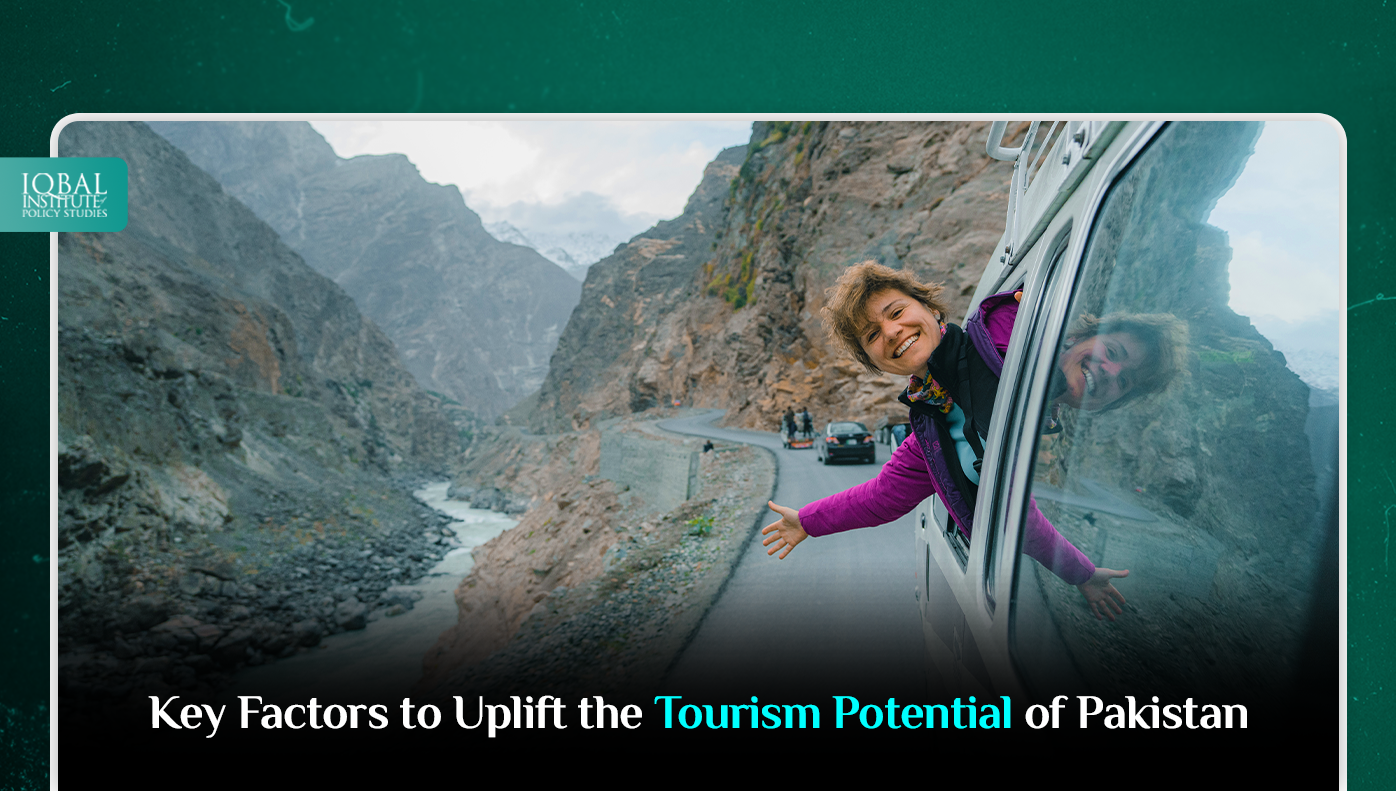The tourism sector plays a significant role in boosting the economy and geography of the cities. By 2030, it is estimated that two third of the world’s population will be living in urban areas. Thus, it is imperative to make policies that could improve tourism performance in urban destinations.
The World Tourism Organisation (UNWTO) has been giving more importance to urban tourism and considering it as a main driving force for economic development. It also plays a remarkable role in transforming the urban space by rejuvenation of public space, public infrastructure, linkages and development of amenities and recreational activities, as well as enhancing business entrepreneurship, encouraging private-public partnership, imparting technology in the tourism sector and preparing long-term policies.
Tourism Potential in Pakistan
The tourism industry is considered a central driving force for sustainable socio-economic development. Tourism is important for enhancing economic activities in the country. However, business development and innovation can be considered important drivers for boosting the tourism and hospitality industry through technology.
The Conde Nast Traveller, a London-based travel magazine, proclaimed Pakistan as the top travel destination in the world for the year 2020. The following year, the British Backpackers Society announced Pakistan as the world’s third-highest potential adventure destination. The tourism and travel industry contributed 3.7% of the economy’s GDP in 2021. This industry created 6.2% of total employment opportunities. However, foreign tourists spend around 2 billion on Pakistan’s economy annually.
Key Factors Required to Uplift Tourism Sector
Long-term Vision and Strategic Planning
The city’s tourism performance depends on short, medium and long-term vision. For the holistic approach, a common vision can be built by incorporating the thoughts and ideas of all stakeholders, i.e., policymakers and citizens of the city. In Pakistan, policies are fragmented and depend on the different departments to implement them. The country’s government should learn lessons from Turin (Italy) and Linz (Austria), which have designed an efficient policy that help the city to transform itself by placing tourism and culture at the heart of the process. It was found that their dramatic regeneration and renovation serve as extraordinary examples of integrated development, which made the city a more attractive place to live, work and visit.
Private and Public Sector Investment
Private and public partnership plays a significant role in uplifting the country’s tourism sector. Private companies will help collect finance, management expertise, technology, and other resources, which can boost sustainable tourism in the country. For instance, Beijing has vigorously promoted PPPs in the tourism sector. The government agreed to promote the development of cultural and creative industries with the support of the private sector.
Economic Support
The tourism industry support economy by generating employment opportunity. It has the potential to observe a youth bulge as the unemployment rate in Pakistan is 6.2%. The Tokyo government supports small and medium-sized industries which provide accommodation, restaurants and other tourism services to uplift their competitiveness. The incentives these industries provide in turn of support are generating revenue and employment opportunities.
Community Engagement
The involvement and engagement of local people in tourism should be encouraged as this kind of strategic planning has proven successful. For instance, Copenhagen’s tourism strategy includes resident and citizen involvement into it by considering that tourism may have a negative impact on the resident’s quality of life if the local community is not involved in the visitor experience. Bogota has introduced Community Engagement Programmes which disseminate information about tourism as a value addition.
Cultural Heritage Investments
Tourism can be improved with the preservation of cultural heritage buildings. The cultural sites encourage outsiders to visit and possibly experience the culture. The preservation and revamping of the cultural site would be useful because it increases tourist visibility of the past. For instance, Beijing has restored the cultural and heritage sites of Imperial Palace Museum, Tianjin’s Foreign Concession and the Grand Canal of Hangzhou.
Product Development
Product development in the tourism sector plays an essential role in creating new attractions. An outstanding success story is the Ars Electronica Center in Linz, a museum that presents, interprets and provokes ideas about futuristic visions of society and its impact on the environment. Similarly, the West Lake Impression, a large-scale open-air performance on a water stage, has been an innovative attraction in Hangzhou.
Hosting of Events
The hosting of more and more events will increase the city’s revenue and mitigate the seasonality effect. For instance, Sapproo is organising the snow festival, a two-week festival with snow statues, stalls of food and drinks, skating rings and various shows that attract international visitors.
Policy for Sustainable Development and Management
Only focusing on increasing tourism growth in number will not help in achieving sustainable development. It is imperative to include cooperate social responsibility and policies that encourage recycling, air quality, energy efficiency and green spaces. Cape Town’s V&A Waterfront, for example, is built around creating and fostering opportunities for the citizens of this country. Its vision is to be recognised as a prime destination for tourism and managed as a professional and environmentally conscious business. Likewise, Turin’s Slow Food is an organisation that promotes local food cultures and traditions and contributes to positioning Turin on the map of gastronomy centres, focusing on quality, fairness and sustainability of food production, processing and consumption.
Technology
In developed countries, the concept of smart cities and new platform tourism services have been introduced to improve the quality of life of citizens and tourists. For instance, Seoul has adopted the Share City Seoul project, which seeks to create a shared economy ecosystem and spread shared culture. Sapporo and Antwerp use crowd monitoring in real-time to steer tourist flows, visualise mobility and security, and, if necessary, take action. The ‘Big Data’ project will turn Buenos Aires into the first city in South America to its own development of a Big Data tool applied to tourism.
Conclusion
The tourism industry is considered a central driving force for sustainable socio-economic development. Urban tourism was evolving and considered a main driving force for economic development. It also plays a remarkable role in transforming the urban space by rejuvenation of public space, public infrastructure, linkages and development of amenities and recreational activities, as well as enhancing business entrepreneurship, encouraging private-public partnership, imparting technology and developing long-term policies.



Leave a Reply